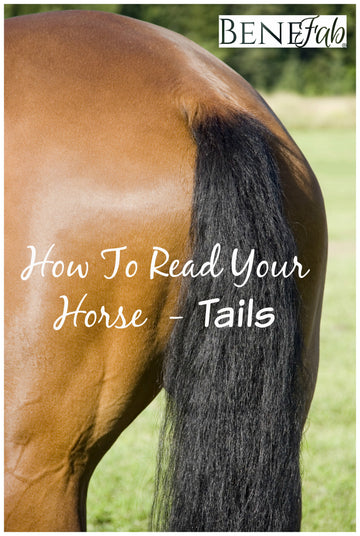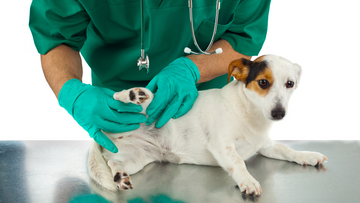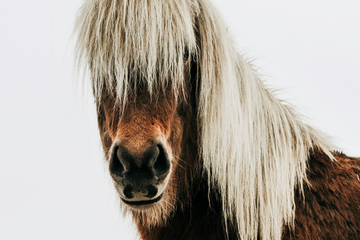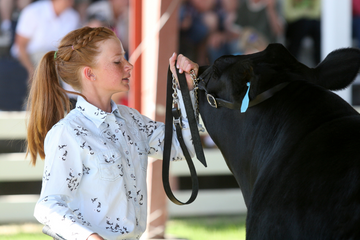 We are back at it again! This week we are going to go over tail movements. Hopefully over the past couple of weeks you’ve been able to notice some things that your horse is telling you by his ears and eyes. Let’s talk about how to read your horse's tail
Tail movement can often be overlooked by many people but tails can tell us a lot about how our horse is feeling. Unfortunately it is not as easy as reading a dog’s tail, but once you learn what each movement means you will have a better understanding.
Tails
“X” figure
When a horse is swinging his tail back and forth, you will notice that makes an “X” figure. This can occur whether the top of their tail is relaxed and down or even held out a bit. This “X” figure means that your horse is happy, relaxed and confident with what he is doing.
Soft side-to-side swish
A soft side-to-side swish means that the horse is slightly overreacting to something such as a cue that was too much for him.
Hard side-to-side swish
A hard side-to-side swish means that the horse is really overreacting to something. This will look like the horse is swishing at flies. Your horse is a little mad and could be resisting or upset about what he is being asked to do.
Over the back swing
When a horse is really mad or really resisting something, they will swing their tail up and over their back. This is also seen when an alpha horse is running other horses off.
Not only does tail movement tell you a lot about what the horse is feeling, tail carriage can as well. When a horse carries their tail out from their bodies, they are trying to balance their body. This is also seen in horses that are more sensitive.
When a horse is very relaxed, confident, and correct in self-carriage, a horse will lay their tail next to their hip. This is actually how tail altering came about – to make the horse look relaxed even if they are not.
Tails will tell you more than meets the untrained eye. Pay close to a horse’s tail movement and carriage to read them. You will be surprised at what you can learn!
Next week, we will be learning about a horse’s mouth. For more information on tail movements and carriage, visit: http://americashorsedaily.com/how-to-read-your-horse-part-1/#.VJDzpWRDtgo
We are back at it again! This week we are going to go over tail movements. Hopefully over the past couple of weeks you’ve been able to notice some things that your horse is telling you by his ears and eyes. Let’s talk about how to read your horse's tail
Tail movement can often be overlooked by many people but tails can tell us a lot about how our horse is feeling. Unfortunately it is not as easy as reading a dog’s tail, but once you learn what each movement means you will have a better understanding.
Tails
“X” figure
When a horse is swinging his tail back and forth, you will notice that makes an “X” figure. This can occur whether the top of their tail is relaxed and down or even held out a bit. This “X” figure means that your horse is happy, relaxed and confident with what he is doing.
Soft side-to-side swish
A soft side-to-side swish means that the horse is slightly overreacting to something such as a cue that was too much for him.
Hard side-to-side swish
A hard side-to-side swish means that the horse is really overreacting to something. This will look like the horse is swishing at flies. Your horse is a little mad and could be resisting or upset about what he is being asked to do.
Over the back swing
When a horse is really mad or really resisting something, they will swing their tail up and over their back. This is also seen when an alpha horse is running other horses off.
Not only does tail movement tell you a lot about what the horse is feeling, tail carriage can as well. When a horse carries their tail out from their bodies, they are trying to balance their body. This is also seen in horses that are more sensitive.
When a horse is very relaxed, confident, and correct in self-carriage, a horse will lay their tail next to their hip. This is actually how tail altering came about – to make the horse look relaxed even if they are not.
Tails will tell you more than meets the untrained eye. Pay close to a horse’s tail movement and carriage to read them. You will be surprised at what you can learn!
Next week, we will be learning about a horse’s mouth. For more information on tail movements and carriage, visit: http://americashorsedaily.com/how-to-read-your-horse-part-1/#.VJDzpWRDtgo
Blog
How To Read Your Horse - Tails

 We are back at it again! This week we are going to go over tail movements. Hopefully over the past couple of weeks you’ve been able to notice some things that your horse is telling you by his ears and eyes. Let’s talk about how to read your horse's tail
Tail movement can often be overlooked by many people but tails can tell us a lot about how our horse is feeling. Unfortunately it is not as easy as reading a dog’s tail, but once you learn what each movement means you will have a better understanding.
Tails
“X” figure
When a horse is swinging his tail back and forth, you will notice that makes an “X” figure. This can occur whether the top of their tail is relaxed and down or even held out a bit. This “X” figure means that your horse is happy, relaxed and confident with what he is doing.
Soft side-to-side swish
A soft side-to-side swish means that the horse is slightly overreacting to something such as a cue that was too much for him.
Hard side-to-side swish
A hard side-to-side swish means that the horse is really overreacting to something. This will look like the horse is swishing at flies. Your horse is a little mad and could be resisting or upset about what he is being asked to do.
Over the back swing
When a horse is really mad or really resisting something, they will swing their tail up and over their back. This is also seen when an alpha horse is running other horses off.
Not only does tail movement tell you a lot about what the horse is feeling, tail carriage can as well. When a horse carries their tail out from their bodies, they are trying to balance their body. This is also seen in horses that are more sensitive.
When a horse is very relaxed, confident, and correct in self-carriage, a horse will lay their tail next to their hip. This is actually how tail altering came about – to make the horse look relaxed even if they are not.
Tails will tell you more than meets the untrained eye. Pay close to a horse’s tail movement and carriage to read them. You will be surprised at what you can learn!
Next week, we will be learning about a horse’s mouth. For more information on tail movements and carriage, visit: http://americashorsedaily.com/how-to-read-your-horse-part-1/#.VJDzpWRDtgo
We are back at it again! This week we are going to go over tail movements. Hopefully over the past couple of weeks you’ve been able to notice some things that your horse is telling you by his ears and eyes. Let’s talk about how to read your horse's tail
Tail movement can often be overlooked by many people but tails can tell us a lot about how our horse is feeling. Unfortunately it is not as easy as reading a dog’s tail, but once you learn what each movement means you will have a better understanding.
Tails
“X” figure
When a horse is swinging his tail back and forth, you will notice that makes an “X” figure. This can occur whether the top of their tail is relaxed and down or even held out a bit. This “X” figure means that your horse is happy, relaxed and confident with what he is doing.
Soft side-to-side swish
A soft side-to-side swish means that the horse is slightly overreacting to something such as a cue that was too much for him.
Hard side-to-side swish
A hard side-to-side swish means that the horse is really overreacting to something. This will look like the horse is swishing at flies. Your horse is a little mad and could be resisting or upset about what he is being asked to do.
Over the back swing
When a horse is really mad or really resisting something, they will swing their tail up and over their back. This is also seen when an alpha horse is running other horses off.
Not only does tail movement tell you a lot about what the horse is feeling, tail carriage can as well. When a horse carries their tail out from their bodies, they are trying to balance their body. This is also seen in horses that are more sensitive.
When a horse is very relaxed, confident, and correct in self-carriage, a horse will lay their tail next to their hip. This is actually how tail altering came about – to make the horse look relaxed even if they are not.
Tails will tell you more than meets the untrained eye. Pay close to a horse’s tail movement and carriage to read them. You will be surprised at what you can learn!
Next week, we will be learning about a horse’s mouth. For more information on tail movements and carriage, visit: http://americashorsedaily.com/how-to-read-your-horse-part-1/#.VJDzpWRDtgo





















